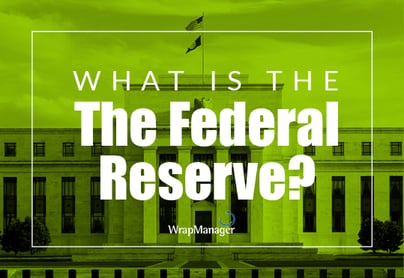
The Federal Reserve (Fed) met on July 25 and 26 with little fanfare, since they did not end up raising interest rates. In a statement, the Fed said the job market continues to strengthen, but inflation remains somewhat of a concern. Inflation metrics have fallen below the 2% threshold the Fed considers healthy, and as such the central bank will be “monitoring inflation developments closely.”
The Fed gets quite a bit of media attention, and it got us thinking: for many normal investors and retirees, the Federal Reserve is probably an institution shrouded in mystery. What is the Federal Reserve? How did they come into existence? Are they as important as everyone says they are?1
There is no way we can cover all of that ground in this post, but we figured offering four little-known facts about the Federal Reserve could at least help readers get to know the institution a bit better. Here they are:
Fact #1: The Federal Reserve was Created in 1913 in Response to Bank Panics
Financial crises and bank panics used to be a common occurrence in this country. Oftentimes, the failure of one bank would create a domino effect across the banking system, with customers rushing from bank to bank to withdraw funds—exacerbating the panic. Banks were in desperate need of a source of emergency reserves to prevent these panics and deposit runs from putting them out of business. The severe panic of 1907 created the impetus for the government to finally take action, which it did with the Federal Reserve Act of 1913.2
Fact #2: The Fed Does Not Print Money
A common misnomer is that in a crisis the Fed can simply print money to solve a problem, but that is not actually the case. The Bureau of Engraving and Printing, part of the US Treasury, is responsible for printing money. The Federal Reserve ultimately decides how much of it to put out into the economy, or how much to potentially remove from circulation with monetary policy measures like selling bonds.3
Fact #3: Congress Oversees the Fed, but the Fed Operates Independently
That may sound confusing at first. But the basic premise is that Congress establishes objectives it wants the Federal Reserve to accomplish, such as full employment and a certain level of inflation. But according to the Federal Reserve Bank of St. Louis, Congress gave the Federal Reserve the autonomy to carry out its responsibilities without political pressure. Each of the Fed's three parts—the Board of Governors, the regional Reserve Banks, and the Federal Open Market Committee (FOMC)—operates independently of the federal government to carry out the Fed's core responsibilities.4
Fact #4: A Federal Reserve Governor Serves a Term of 14 Years
There are seven Federal Reserve Governors in Washington D.C., all of whom are appointed by the President of the United States and confirmed by the Senate. A Governor’s term lasts 14 years! But here’s the catch— appointments to the Board of Governors are staggered, with one Governor's term expiring every two years. This ensures that a single president cannot fill the Federal Reserve with political appointees operating with a certain agenda in mind, and it allows for continuity of policy and research. The current Chair of the Federal Reserve Board is Janet Yellen.5
Investing is About Always Learning
Why did we decide to write facts about the Federal Reserve, you may wonder? It’s because we place a high premium on the value of investment knowledge. And that’s something we want for our clients, too. Our Wealth Managers are here to answer your questions and to help you learn, just give us a call at 1-800-541-7774 or send an email to wealth@wrapmanager.com to start the conversation! You can ask us just about anything that’s on your mind.
Sources:
CNN Money 1
Federal Reserve of St. Louis 2, 4, 5
Bankrate 3





